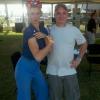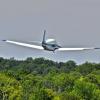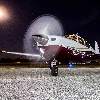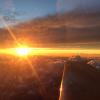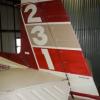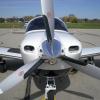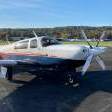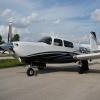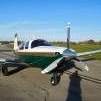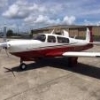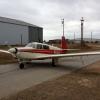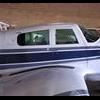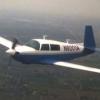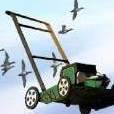Leaderboard
Popular Content
Showing content with the highest reputation on 05/25/2015 in all areas
-
Jim STP wont quiet the lifters on startup , I have been an Auto Mechanic for 35 years , you may want to try about 6 to 8 ounces of ATF in the crankcase at oil change , I have been doing this for years on older cars , and it works about 90% of the time....You should consult with Peter first ......He is the expert...3 points
-
Some of you might be surprised to learn that Lycoming specifies using some STP as a pre-lube during engine assembly. I just read that Saturday in THEIR overhaul manual. Sent from my VS985 4G using Tapatalk2 points
-
Brian , since I volunteered you for this exercise in futility , I will be more than happy to assist , I think the clinic should focus on Mooney specific items , I think we should rig and set preload on someones gear especially a J-Bar , Gear stack inspection , lube points on rod ends and trim universals , proper jacking , visual inspection of Brittain servos , SB 208 compliance , and common corrosion issues associated with older short bodies....I think we should do at least two oil changes , two jack ups and gear swings , one weight and balance , .....we will have to have any one who volunteers his plane to be penciled in at least two weeks in advance , tell me what tools to bring and I'm there..... I may even be able to get an Avionics guy to do Pitot static tests.......2 points
-
I wish it were that easy. For those of us who fly in the Northeast, what you file, what ATC proposes back (through ForeFlight or Garmin Pilot) and what you get are not usually the same. I think where the real power comes with the Pilot to GTN/GNS through Flightstream is a lengthy clearance. Instead of adding and dropping things on the panel mounted unit, you simply do it on Pilot and upload it. Sent from my iPad using Tapatalk2 points
-
Hey guys I was wondering if anyone would be interested in helping me change the oil in my F model. I'm located in Stuart, fl but am willing to make a flight somewhere if needed?1 point
-
1 point
-
I also came back on Sunday to avoid the 100% chance of thunder storms that are now pelting the Austin area. Glad you made it back yesterday, and are not flying now!1 point
-
Is that means the fuel capacity went from factory of 64 gallons to 50 gallons with the O&N bladders. 14 gallons less capacity? There must be something wrong your bladders. José1 point
-
I searched for an FAA Circular on the subject but did not find any. There is an interesting one from Australian AC 21-38(0) MARCH 2005 AIRCRAFT ELECTRICAL LOAD ANALYSIS AND POWER SOURCE CAPACITY. Good information but advisory only, not regulatory. The FAR refers to F2490-05(2013) Standard Guide for Aircraft Electrical Load and Power Source Capacity Analysis, 2013 which is an ASTM publication I thought I remember something about the maximum load not exceeding a certain percentage of the Alternator capacity but that might have been a daydream........ anyway I can't find it.1 point
-
Anthony, Definitely filing IFR and based on the earlier feedback will file direct. The comments prompted me to measure the distances a little more precisely and check the POH for gliding distances and all looks cool. My question was prompted to some extent by my experiences coming into the tri-state area from the West and the SW which would be the case if going the southerly route. Every time I've come or gone in those general directions (e.g. to/from Elmira or Northern PA) I have been re routed in an out-of-the-way manner. When I once asked the controller why my clearance was for a more southerly route than I had filed and why he couldn't give me a direct I was told that the more direct routing interfered with the traffic into Newark. Going direct will keep me North of the Elmira/Binghamton/IGN line and I'm hoping will make a direct or favorable airways route more likely. Robert1 point
-
Suppose that an oil manufacturer has a product that does 98% of what is desired. Then they figure out that to get that extra 2% protection, they will have to spend an additional $1 per quart. This will boost their cost such that they will have to either cut into their profit considerably, or raise their price substantially above their competition. What do you think their decision would be. If you assume they would do nothing, how much more would you spend to add something to gain that 2%.1 point
-
1 point
-
STP is a ZDDP additive. Two reasons not to use it are: Our aviation oils are Ashless meaning that they burn without leaving an ash. The ash will build up on valve stems and cause stuck valves. ZDDP will leave an ash and can lead to stuck valves. ZDDP can reduce cam and lifter wear up to a point. More then 1400 PPM of it can cause pitting of lifter surfaces. Adding a bottle of STP will raise the level of ZDDP above this level.1 point
-
Alan, I'm in the middle zone... Zone 1) If it has data that supports it's use in our application (Ed Kohl style?)... Zone 2) it clearly fixes the obvious problem somebody is having, but doesn't cover all the other bases (no data available) I am reluctant to do things without all the data to support its use in our engines. This is related to how easy it is to park a car on the side of the road compared to me landing a plane in a field... My FB can find safe parking using it's starter motor...I'm not going to try this with the IO550.... Best regards, -a-1 point
-
Anthony , I disagree , if you have ever handled STP, once it gets on something it does not get off , if you put a drop of it on a desk , and touched it with your finger , it will stretch like honey or taffy , The surface tension of it is truly amazing....In testing they have put it in oil and drained the oil , and driven cars 50 miles or better with the oil removed.....the only drawback I could see is if it is not ashless dispersant.....1 point
-
Last year when we changed the brake pads in my plane (Bravo with dual brakes) we had a problem getting the left brake on the left side to come back up completely. It was soft after bleeding it quite a bit but finally came mostly back up - but never completely right. Over the time between then and now the brake would get soft, I'd add fluid and it would come back up but was still a little soft. A few weeks ago it got really soft and would not come back up. I read all about other peoples brake woes on MooneySpace as well as brake issues on other sites and attempted numerous resolutions on soft/spongy brakes. I tried every solution I could find but to no avail. That friggin' left peddle on the left side was not coming up! I reviewed the issue with a friend (partner in another plane) and he said "let's try an old motorcycle trick". An air bubble will move freely across a consistent surface but where the shape of the inside of the brake line changes a bubble will stop - especially when that change in internal brake line is at a high point in the system or a portion of the system. He got under the wheel well and found the point where the flexible hose goes into the rigid metal brake line (see attached pic) and said let's bleed it here. I got in the pilots seat, pumped up the left brake peddle and he eased the fitting loose and tightened it back up when I had the peddle completely pressed. We did this 2 times and voila, nice stiff brake peddle that had been soft all the way to the floor. I hope this helps other people get past similar brake problems. It was quite frustrating - there had to be a solution and there is (at least for me). Happy Braking! Dave1 point
-
That's great, Bob! Nice planes, coherent interview and good points. Larry's A was really nice (I have some good pictures of it), but there was a heavily modified E that we were all drooling over, too. It was a great day in the mountains.1 point
-
It took me a bunch of hours as well. My IFR training was complicated by my working on projects on 4 different regions of the country, so by the time it was all done I had had seven different instructors for the IFR ticket alone. A Mooney and an IFR rating go together like peas and carrots though - hard to do long corss countries and stay VFR all the time, unless you live in the southwest. Except this year - holy smokes it's been crappy.1 point
-
Logic of this thread... 1) engine parts wear... 2) worn engines lose oil internal to the cylinders. 3) oil in the cylinders burns and clogs spark plugs. 4) oil thickening agents keeps oil from easily passing through wear enlarged gaps. 5) unfortunately, thickened oil does not lubricate as well as the intended viscosity of oil that is recommended for the engine. 6) Oil thickener can minimize the loss of oil at the cost of not lubricating tight tolerance parts. 7) the example of a VW engine running 100kmi and looking like new while destroying a valve sounds like what you can expect of an air cooled plane's engine. Other automotive examples... Valve guides wear and drip oil into the cylinder. Burnt oil blocks the spark plug. Fuel injector cleaner or heavy doses of intake cleaner can wash the build-up off spark plugs... (’87 firebird experience L98 engine) If the logic fits... Somebody is using a chemical agent to band-aid a physical wear problem. The cost is even less lubrication in unworn tolerances. Valves are a terrible thing to get stuck in the O360. I had that experience too... There is no magic behind most of these wonderous additive products. Find out what is worn and not working and get it replaced. It might be as simple as OH a cylinder... Best regards, -a-1 point
-
1 point
-
Nice video Bob! Thanks for the great cameo appearance for 34 Sierra!1 point
-
I think Ryan can show you how he handled it recently... Try this... http://mooneyspace.com/topic/15332-how-hard-is-it-to-change-door-panel-got-mine-in-the-mail/?hl=%2Bdoor+%2Bpanel Best regards, -a-1 point
-
the request was just sprung on me so I am just in the the beginning stages of planning, my initial thought was to do it on a Saturday some time in the fall. I am open for suggested dates and I love the enthusiasm already being displayed, if everything goes well I thought we could do a spring follow up covering topics that were not covered in the fall. out of curiosity are you willing to come down and help out? Brian1 point
-
Center controllers are allowed to issue vectors to a final approach course but not to all approaches/airports....this is an airport specific question.....in doubt? Call the controlling center prior to departure. Usually very helpful. Thinking about "the full procedure" in advance? Your 'approach com freq on the plate' observation is a good one, but also look at the approaches available. DME ARC to an ILS (like RWY 26 KAST)? Assuming a center controller, it's a pretty good bet you'll intercept that gem if it intersects your route. Not reasonably lined up with the final approach course (say 30 degrees L/R) on your route? Expect a course reversal or some other transition. If clearances are not obvious or you have questions ask ATC. While you should expect to do the entire approach procedure when cleared for an approach ATC might be surprised by a PT if you are pretty much lined up with a final approach course even if not on a published segment. If it is a busy place they would likely want to know if you are planning a course reversal. Remember the magic words......cleared "Straight in Approach". If ATC doesn't say it and you want it, ask for it. Clears up confusion. Filing via a straight-in fix of an expected approach or transition, esp. at an unfamiliar airport, might be a strategy for you (but doesn't always work.....). Also remember approach radar may be OTS or part time so plan accordingly.1 point
-
Ain't nothing wrong with any C that's in good shape! I just flew 4.6 hours home, landed with 12 gallons in the tanks. Heading out the other day, I took off on the Left tank and climbed to 9500 msl. One hour after departure, I switched to R, then back to L after another hour. Then I got distracted fiddling with the cellphone, ATC handoffs and descending for arrival, plus looking at the field that I wanted to use to see why the runway was NOTAMed closed. [There was fresh black pavement on both ends, and one end had a black square in the older pavement, looked like they did away with the runway number. Not sure if it's an overrun, extension, or what. Should be finished on 12 June.] At 3:25, the engine stumbled and caught. I checked the throttle, I had not bumped it. Then it stumbled and surged, and look! Still set for Left tank--switched it to Right and continued on the 12 remaining minutes to my destination. Flight time was 3:35 from wheels up to touchdown, used 36.7 gallons but that filled to the caps while I normally leave some expansion space. I'm logging 3.8 hours to cover engine on to engine off. Left tank taxied out, ran up, climbed from 264 msl to 9500 msl, and flew for 2:25 duration [plus taxi & runup]. All on just 26 gallons. Not too shabby. Total flight was 461 nm, solo.1 point
-
Lance-- This will be really, really close! There is almost 2½" of space between the back of my WX-10 and a diagonal metal brace. The -950 is 2¼" longer . . . But I'll take it anyway!!1 point
-
I sent an aileron servo to Brittain in Dec 12 because it had a tear > 1". My cost for OH was $124 + shipping [uPS, ~$10]. Cant be beat!1 point
-
I've heard that broccoli rubber bands work. But I just don't bother with anything, it's not a real problem.1 point
-
S-top T-hink P-lan If you intend to add unapproved things to your plane's oil, it would be good to STP first... Stop, think, and then plan... One of those memory things they teach people. Best regards, -a-1 point
-
1 point
-
were you in an area where radar coverage was available?1 point
-
1 point
-
You need a small arm and hand to get the ones in the wings out. The 2 in the tail are easier to get out. You may want to look at all 4 carefully and see if there are other tears or perhaps some of the others may need retaping also.1 point
-
I had a recent tear in the similar Step Boot. Brittian says that step boot is not available for a number of months yet. I used a small piece of clear Gorilla tape (advertised for patching air mattresses) over the tear itself with maybe 1/2 inch margin. Then I overlaid that with longer overlapped layers of black electrical tape. I had a little leak still right at the lower end. A tight wrap of the stretch electric tape all around that lower disc seemed to get it stopped. It is very difficult to identify leak location with the vacumn test. I attached a separate tube to the nipple, coated the suspect area with a dish soap/water solution and used my lungs to slightly inflate the bellows. The smallest leak showed right up with bubbles. Rinsed with fresh water and dried carefully as I went. Also, is your pilot valve working properly. This can throw off the apparent trim center. I had mine rebuilt by Brittain and the trim centered right up, yoke disconnect switch also works now.1 point
-
+1 on loading and speeds. Slips are effective and safe if, like anything else, done within the envelope. Practice them AT ALTITUDE and add them to your toolkit. Before l became a Mooney owner almost two decades ago, I heard all of the Mooney horror stories: hard to land, easy to bounce, too slick, too small, blah blah blah. Fortunately I had heard the same things about my primary trainer and first plane, the Grumman AA1B, and had stick time in another plane with an awful rep, the Comanche. Far too many of us Mooney pilots have never landed or taken off without flaps, fly final at 90 knots because "my airplane doesn't like to fly slower," or drop the yoke as soon as the mains touch. Get out there and learn the aircraft. If you want some company, there are experienced Mooney CFIs like Don Kaye who will help. Don't let the "old wives" discourage you.1 point
-
Yeah, before that screenshot i flew right through all the Nellis Moas too... Right through the middle! It was awesome... Flight following from nellis control and the moas were cold. Ive done a lot of flying in there, but thats probably the first time i had enough time to really look around... 500kts is a bit different than 140! Marauder, im going to get an ipad mini and mount it on the right side of the panel just to display the adi/syn vis and approach plates for ifr flying. Ill still use the regular ipad for maps, planning, etc, but the mini will be almost like a cb club eadi. Its really good!1 point
-
1 point
-
Dan, Those sound like great resources. currently what I am looking for are the topics people would be interested in and then building a syllabus based on the most requested topics. I was thinking about it more last night and started putting a list of ideas together: Owner performed maintenance- What you can do on your aircraft. Removing and replacing the cowl How to perform an oil change, oil sampling and filter inspection. Aircraft jacking Changing a tire and servicing bearings. understanding your maintenance manual, service intervals and inspection requirements. I could take atleast a full day covering these topics, I'm sure there are more topics that people are interested in. Brian1 point
-
Well I finally took my wife on her first flight and it was the 16th to Auburn (since AOPA flyin weather was not favorable) anyway the restaurant was great and we happened upon the city unveiling a bronze statue in honor of WWII triple ace local veteran Bud Anderson! WWII vintage planes and vendors setup, It was very nice! Funniest thing she said asked was "How do you know our altitude?" This was due to me reporting my position after takeoff due to a lot of activity in the pattern. & "who are you talking to? Nobody is answering you!" It was a lot of fun! Thinking about heading to Benton tomorrow for lunch! Sent from my iPhone using Tapatalk1 point
-
We have been having very unusual weather around here build ups with lightning and heavy showers so I have not flown for 2 weeks and only 3 times in the past month. Finally got up today and man did I have some rust to shake off. Hope to get out at least once more before it goes in for annual next week.. Looking S/E Looking S/W1 point
-
Just did a quick local flight today with my 252 D-EZBK at Cascais (LPCS), and was told by the refueller guy that a German Ovation had just left from Cascais to the Azores with 2 german couples (4 pax) onboard, baggage and fuel for a long overwater flight. They were going for some holidays in the Azores, then back south to Madeira Island and then back to Germany! Mooneys are the best earthrounders GA aircraft!! Also, a visit to the facebook page N228RM is a great experience! It's a european mooney 252 that keeps travelling and makes the world small!!1 point
-
Personally, I don't like the '77 model because it has the fuel selector valve in a place that is difficult for an old man like me to reach (between my feet). In '78 they moved it between the seats. I also prefer the vernier prop and mixture controls vs the airline type levers. Best of luck. Bob1 point
-
Always check your stall horn before using it... Some get 'stuck' in the quiet position. They actually appear to be working physically, just not electrically... Experience from my R, -a-1 point
-
Just do a flooded engine start when it's hot. Mixture at cutoff, throttle full open, crank, and adjust throttle/mixture when she fires.1 point
-
Dude- it's as good as the synthetic vision on an Aspen, and waaaaayyyyyy less expensive. I'm hoping this knocks some sense into the "affordable" avionics company, and they start offering their synthetic vision unlock for a reasonable amount... Like $500.00.1 point

